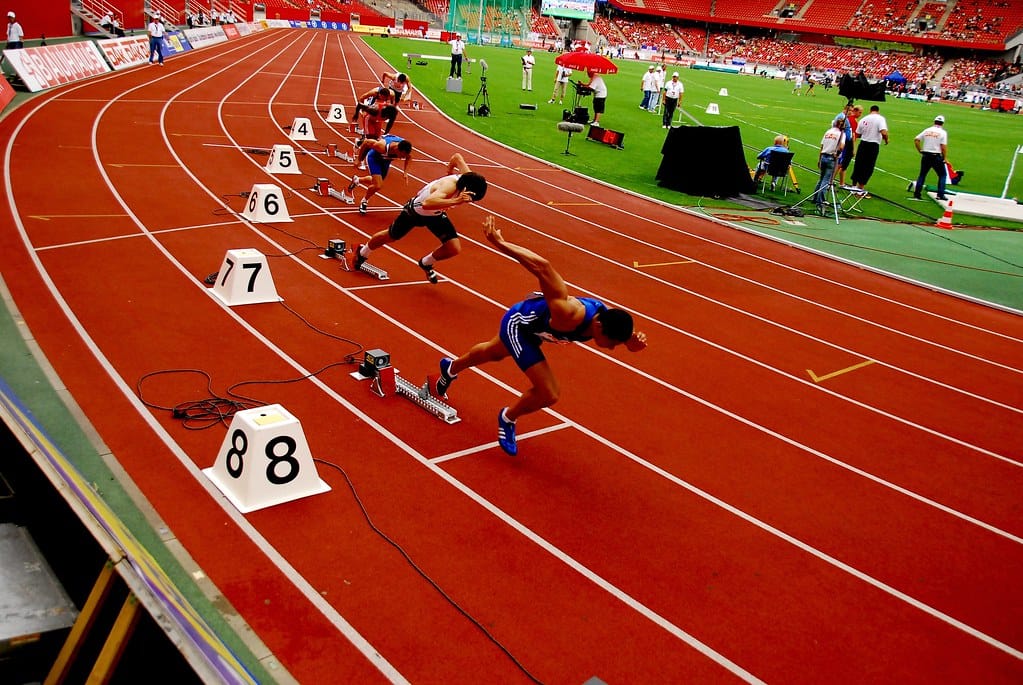Leveling the Playing Field: How Affirmative Action and DEI Initiatives Ensure a Fair Race

Imagine a Relay Race: The Metaphor for Fair Opportunity
Think of a track race where the lanes are staggered because the track curves, meaning runners on the inside naturally cover a shorter distance than those on the outside. To someone unfamiliar with track rules, it might look like the runners on the outside are getting a head start—even though the stagger is carefully calculated so that everyone runs exactly the same total distance. In the same way, without DEI initiatives, some candidates start their “race” at a disadvantage because historical and systemic barriers have effectively placed them further back. DEI measures act like the calculated stagger on the track: they adjust the starting positions so that every competitor—regardless of background—has an equal chance to showcase their skills. This adjustment doesn’t lower the finish line or the standards for success; it simply ensures that the race is fair for all.
Overcoming Historical Barriers
For centuries, historical practices and systemic biases have effectively set back many talented individuals from underrepresented groups. In education and employment, research consistently shows that identical applications receive different responses when the only change is a name that signals minority status. Just as a runner placed in the outside lane would have a longer race to run without the staggered starting points, candidates facing systemic disadvantages must overcome obstacles that have nothing to do with their ability. Without interventions like DEI initiatives, these individuals remain unseen and their skills unproven—perpetuating a cycle of inequality.
How Affirmative Action and DEI Create a Fair Race
Affirmative action and DEI policies are designed to re-calibrate the starting line for everyone:
- Adjusting the Starting Positions: Similar to how the staggering on a track ensures that all runners cover the same distance, these policies provide additional support for candidates from disadvantaged backgrounds so they can compete fairly. This is not about giving an unfair boost; it is about counteracting the extra hurdles imposed by longstanding inequities.
- Mitigating Hidden Biases: Many DEI programs include training that helps decision-makers recognize and set aside unconscious biases. While no program is perfect, the goal is to create evaluation systems where talent is judged solely on merit—much like a race in which every competitor's true speed can be measured without distraction.
- Opening Opportunities: By establishing proactive recruitment efforts, mentoring programs, and equitable hiring practices, organizations can ensure that talented individuals are not overlooked simply because their journey started further back. In doing so, they allow all runners to demonstrate their full potential once they’re in the race.
Evidence of Equal Skill and Potential
Analyses of national data from both the High School and Beyond Surveys and the National Educational Longitudinal Surveys have demonstrated that, while there are dramatic differences among students of various racial and ethnic groups in course-taking in such areas as math, science, and foreign language, for students with similar course-taking records, achievement test score differences by race or ethnicity narrow substantially.
When systemic barriers are addressed, research shows that candidates from historically disadvantaged groups perform on par with—and often excel alongside—their peers. Landmark legal cases, such as Grutter v. Bollinger (2003), affirm that considering race as one of many factors in admissions or hiring is acceptable when it helps foster diversity without lowering standards. Furthermore, multiple studies in education have demonstrated that when minority students are given equitable access to opportunities, their performance and achievements are comparable to those of their peers. These findings highlight that the challenge is not one of capability but of access and opportunity—issues that affirmative action and DEI policies are uniquely positioned to resolve.
Conclusion
Affirmative action and DEI initiatives function much like the carefully calculated stagger on a race track. They adjust the starting positions for those who, due to historical and systemic barriers, would otherwise be at a disadvantage. These policies do not lower the bar for success; they simply ensure that every competitor has a fair chance to demonstrate their skill and achieve their potential. By recognizing and addressing these disparities, organizations and educational institutions foster environments where talent can flourish, benefiting not just individuals but society as a whole.
Final Thoughts
It’s important to remember that the goal of these initiatives is not to favor one group over another but to level the playing field so that every individual can compete on the basis of their true abilities. Continuous research and thoughtful refinements to these policies will help ensure that they remain effective tools in the pursuit of a fairer, more inclusive society.
